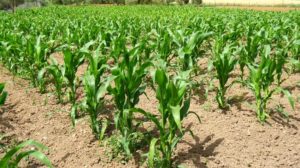By Emmanuel Atamba
The tribulations of the farmers in the North Rift and Western regions that are considered the country’s food basket, have been many and varied and include fertilizer shortages, inadequate supply of seeds or distribution of low-quality seeds and fertilizer, as well as unstable markets and an unheard of maize glut.
Listening to the proceedings of the Senate’s ad- hoc public hearing on outstanding payments to maize farmers in Uasin Gishu County recently, left many pondering about the future for Kenya’s farmers.
Farmers from the neighboring regions find themselves in the same trouble – maize in the NCPB store, maize in their stores, maize in traders’ stores, harvestable maize in the fields and still more maize coming in through the borders. To arrest the problem, there are voices that are discretely telling farmers to move to other crops such as coffee, avocados, and tea.
But what is the genesis of this problem? A few years ago, cane growers in the expansive sugar belt region faced the same test. They were overburdened by poor regulation, lack of proper zoning of the sugarcane regions and the infamous and faceless cartels who would import sugar from countries with comparatively higher production efficiency; lower production cost and competitively lower market prices. The quality did not matter. It still doesn’t.
 The same story has been told of rice, wheat, coffee, tomatoes, cabbages, green grams and other major food crops in Kenya. In an attempt to address the issue, calls were made from influential quarters in the region urging farmers to dump unprofitable crop industries and produce maize like their counterparts in the North Rift. At that stage, maize farming was a profitable venture.
The same story has been told of rice, wheat, coffee, tomatoes, cabbages, green grams and other major food crops in Kenya. In an attempt to address the issue, calls were made from influential quarters in the region urging farmers to dump unprofitable crop industries and produce maize like their counterparts in the North Rift. At that stage, maize farming was a profitable venture.
Since then, however, the situation has not significantly improved for farmers. Just 11 months ago, the government announced a shortage in maize supply in the country and went ahead to subsidize maize flour prices and relieve importers of their tax obligations. No one thought that less than one year from the “emergency period”, we would be choking in a maize glut, with markets so warped that farmers cannot even recover their cost of production from their sales, let alone recouping their investment in time, skills and land use.
This shines a spotlight on the country’s industrial model of farming that focuses on increasing short-term food production and availability and which has evidently failed. High reliance on chemically-based inputs and farm specialization that seeps through the soil to a point that a farmer can only efficiently produce the same crop season after season, can only mean higher costs of production and less competitiveness in increasingly globalized food markets.

The cost of producing a bag of maize in the North Rift, for instance, stands at about KSh1,400. Farmers from neighboring Uganda are very happy to sell maize for as low as KSh1,200 at the border and as low as KSh800 to KSh1,000 at the farm gate.
Apparently, farmers in Uganda use less or no fertilizer to grow maize but rather use manure which is readily available to enrich their soils and sustainably maintain high yields.
The average cost of fertilizer applied by maize farmers in Kenya ranges from KSh15,000 to KSh20,000 with average yields of 30 to 40 bags. This means that farmers spend at least KSh500 on fertilizer to produce a bag of maize. Fertilizer prices in the country are also bloated in favor of a few traders while there are also increasing complaints of counterfeit fertilizers mainly associated with government subsidy programs.
The pursuit of industrial agriculture as Kenya’s main system of farming – for ‘food security’ and revenue – becomes utterly unsustainable as it’s no longer competitive in the regional market and puts Kenyan farmers at a disadvantage. The national conversation we should be having is how to trace our steps back to regenerative farming methods that increase land productivity over time rather than short-term production.
If food security and the realization of the Right to Food under Article 43 of the Constitution are major development priorities for the country, it follows that the government should take measures that encourage healthy agro-ecosystems with the view to reducing production costs and protecting the environment to ensure that farming is profitable and less risky.
There are immense benefits that will follow, such as farmers enjoying the ability to produce multiple food varieties for their own consumption and sell surpluses to enrich local markets with diversity that has been lacking for decades in rural food markets. We need to reassess our farming practices today, to build healthier farms for the future.
The writer is an Ambassador for Route to Food and CEO- APSID Consulting Co.














